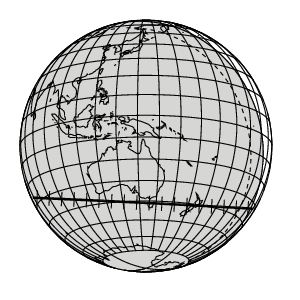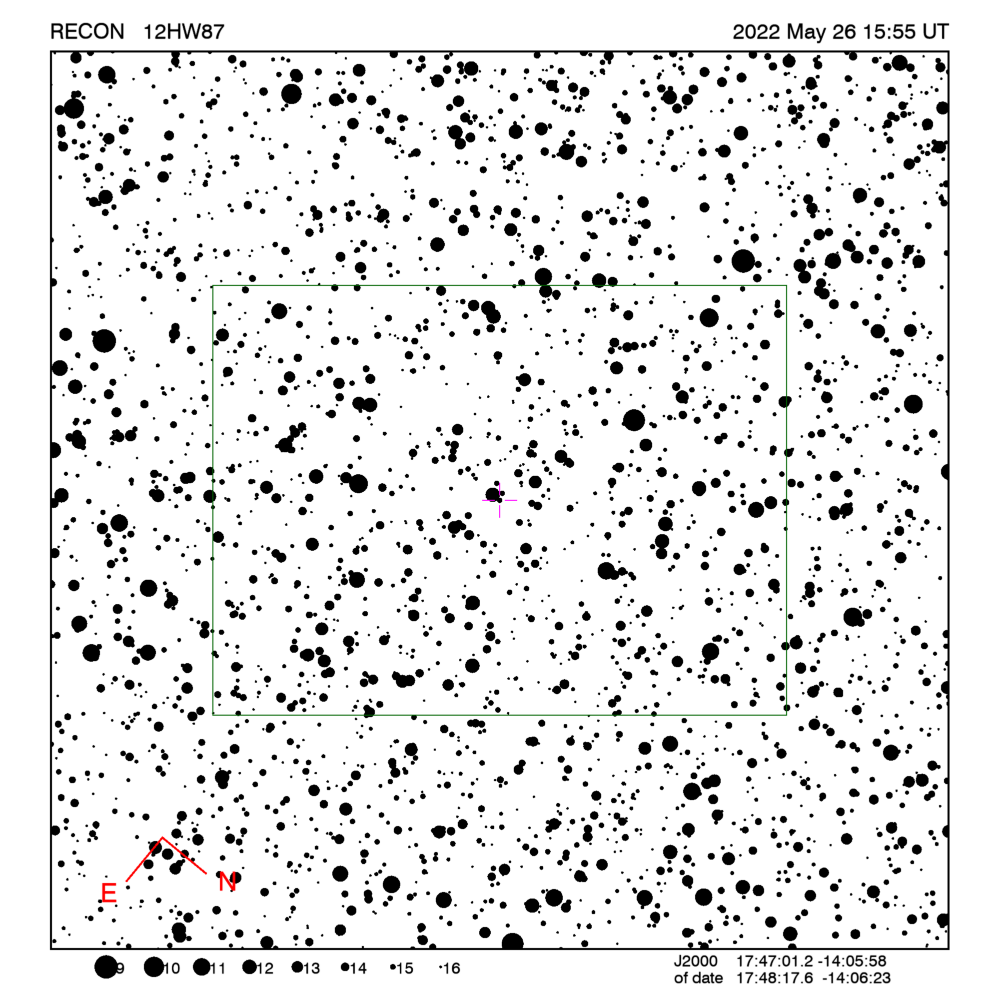RECON: TNO occultation with 12HW87
Event between 12HW87 and star GA0740:11721697
with event index number of 2156241
Geocentric closest approach at 2022/05/26 15:54:43 UTC
J2000 position of star is 17:47:01.2 -14:05:58
Equinox of date position of star is 17:48:16.9 -14:06:22
Stellar brightness G=16.1,
use SENSEUP=128 with the MallinCam and and exposure
time of 2 seconds with the QHY174 camera.
Star is 116 degrees from the moon.
Moon is 13% illuminated.
TNO apparent brightness V=22.9
 TNO is 34.0 AU from the Sun
and 33.1 AU from the Earth.
TNO is 34.0 AU from the Sun
and 33.1 AU from the Earth.
The TNO is moving 20.9
km/sec on the sky relative to the star, or,
3.1 arcsec/hr.
The 1-sigma error in the time of the event is 341 seconds.
The 1-sigma cross-track error in the shadow position is
2034 km.
The TNO has an absolute magnitude Hv=7.6
Diameter=184.5 km assuming a 5% albedo -- 8.8 sec chord
Diameter=75.3 km assuming a 30% albedo -- 3.6 sec chord
Dynamical classification is SCATNEAR
Star training set for 12HW87, (2022/05/26 15:55UT)
Object RA Dec mag sep mel
Antares 16:30:47.1 -26:28:47 0.9 21.94 132
35Eta Oph 17:11:39.9 -15:45:04 2.6 9.00 125
PPM 233599 17:48:53.5 -14:43:57 5.9 0.64 116
PPM 233574 17:47:36.1 -14:05:19 8.5 0.17 116
12HW87 17:48:17.6 -14:06:23 16.1 115
Positions are for equinox of date

Azimuth is measured in degrees eastward from north.
North is at an azimuth of 0, due East is at an azimuth
of 90 degrees, due South is 180, and due West is 270.
Do not use the listing below for the RECON CPC 1100 telescopes.
This is provided for other non-team facilities.
Star training set for 12HW87, (2022/05/26 15:55UT)
Object RA Dec mag sep mel
Antares 16:29:24.4 -26:25:56 0.9 21.94 132
35Eta Oph 17:10:22.7 -15:43:29 2.6 9.00 125
PPM 233599 17:47:36.7 -14:43:34 5.9 0.64 116
PPM 233574 17:46:19.8 -14:04:54 8.5 0.17 116
12HW87 17:47:01.2 -14:05:58 16.1 116
Positions are for J2000
Event circumstances last updated at 2022/03/14 01:02:36 UT
Marc W. Buie,
Southwest Research Institute
RECON
 TNO is 34.0 AU from the Sun
and 33.1 AU from the Earth.
TNO is 34.0 AU from the Sun
and 33.1 AU from the Earth.
